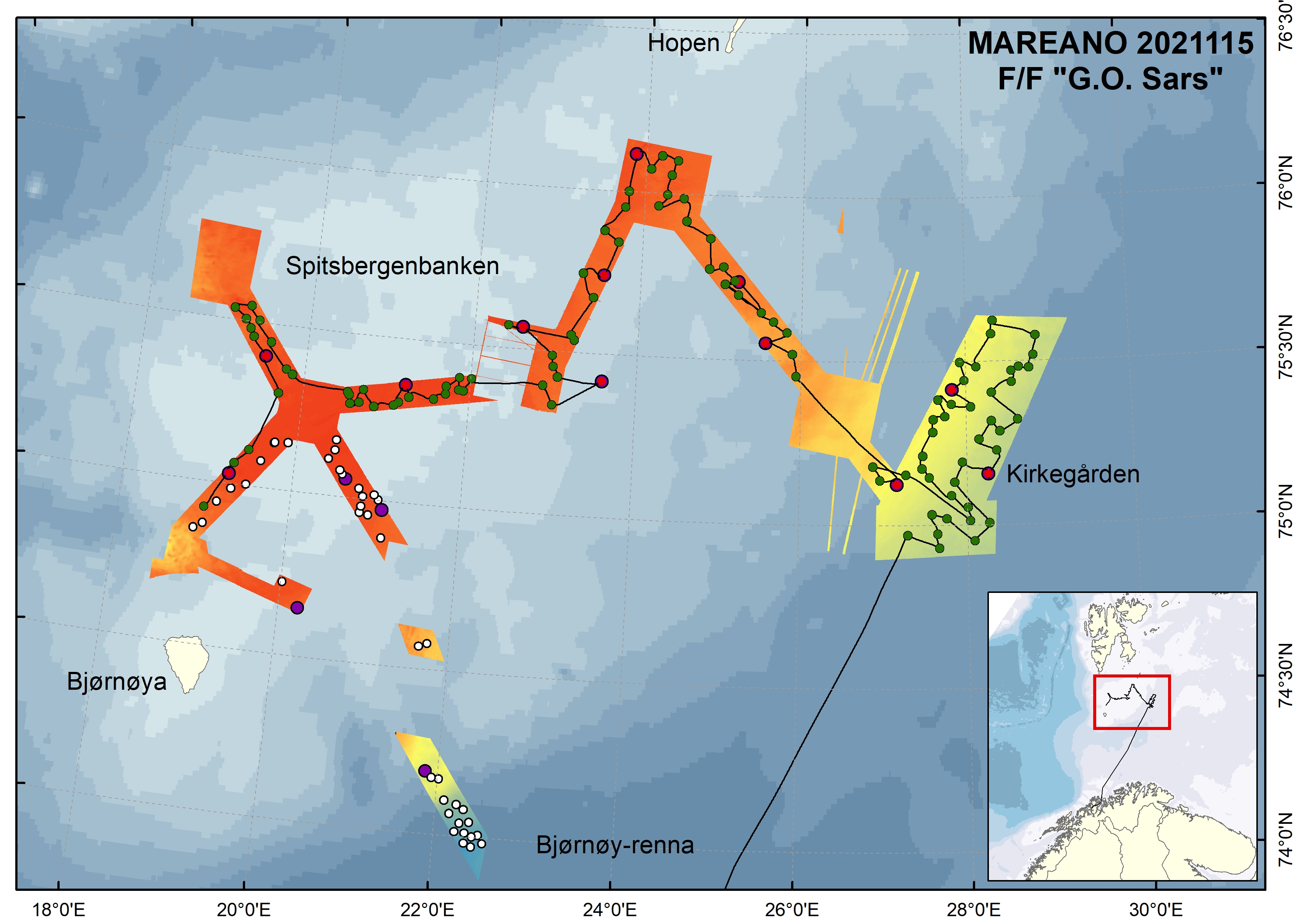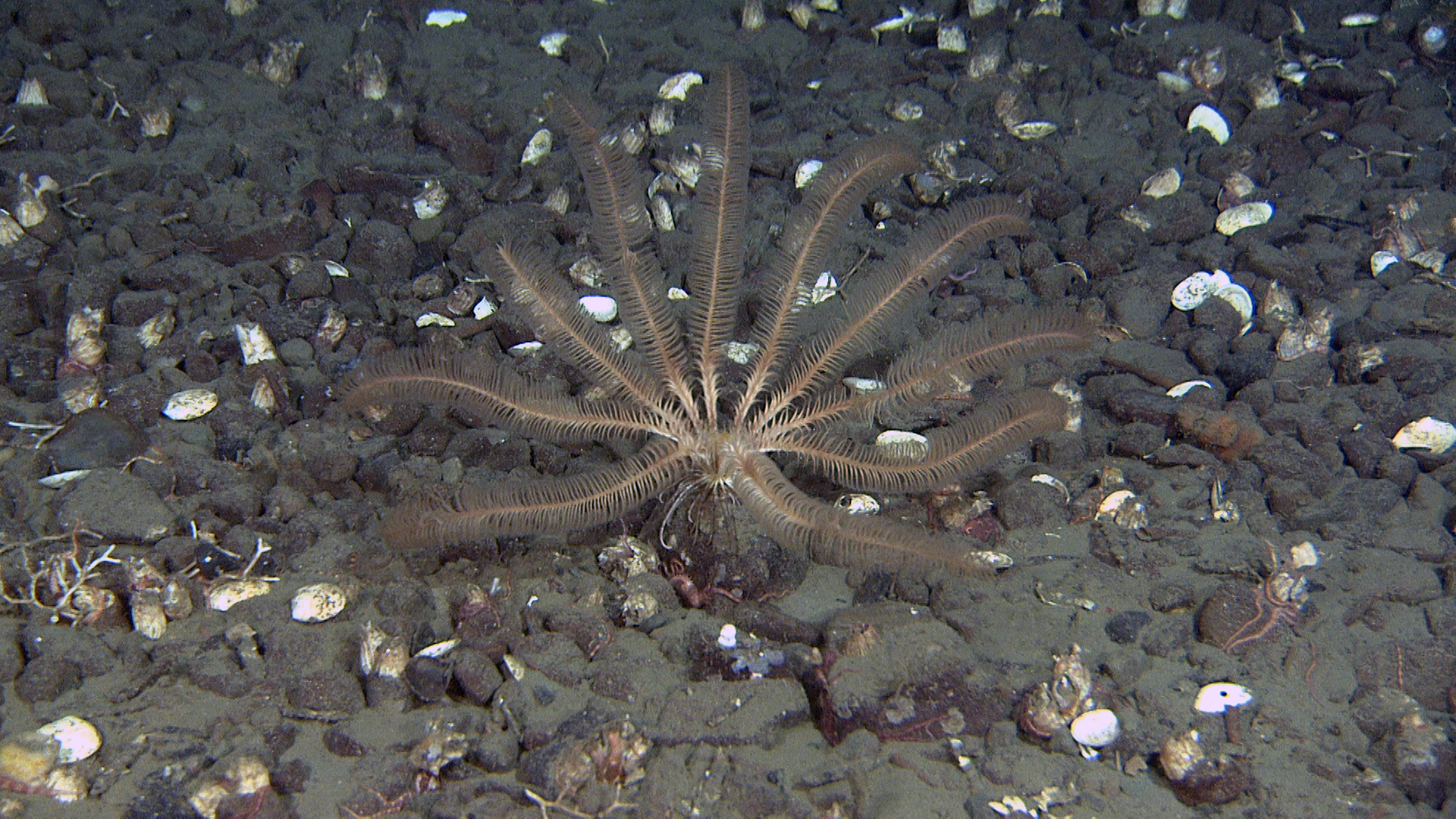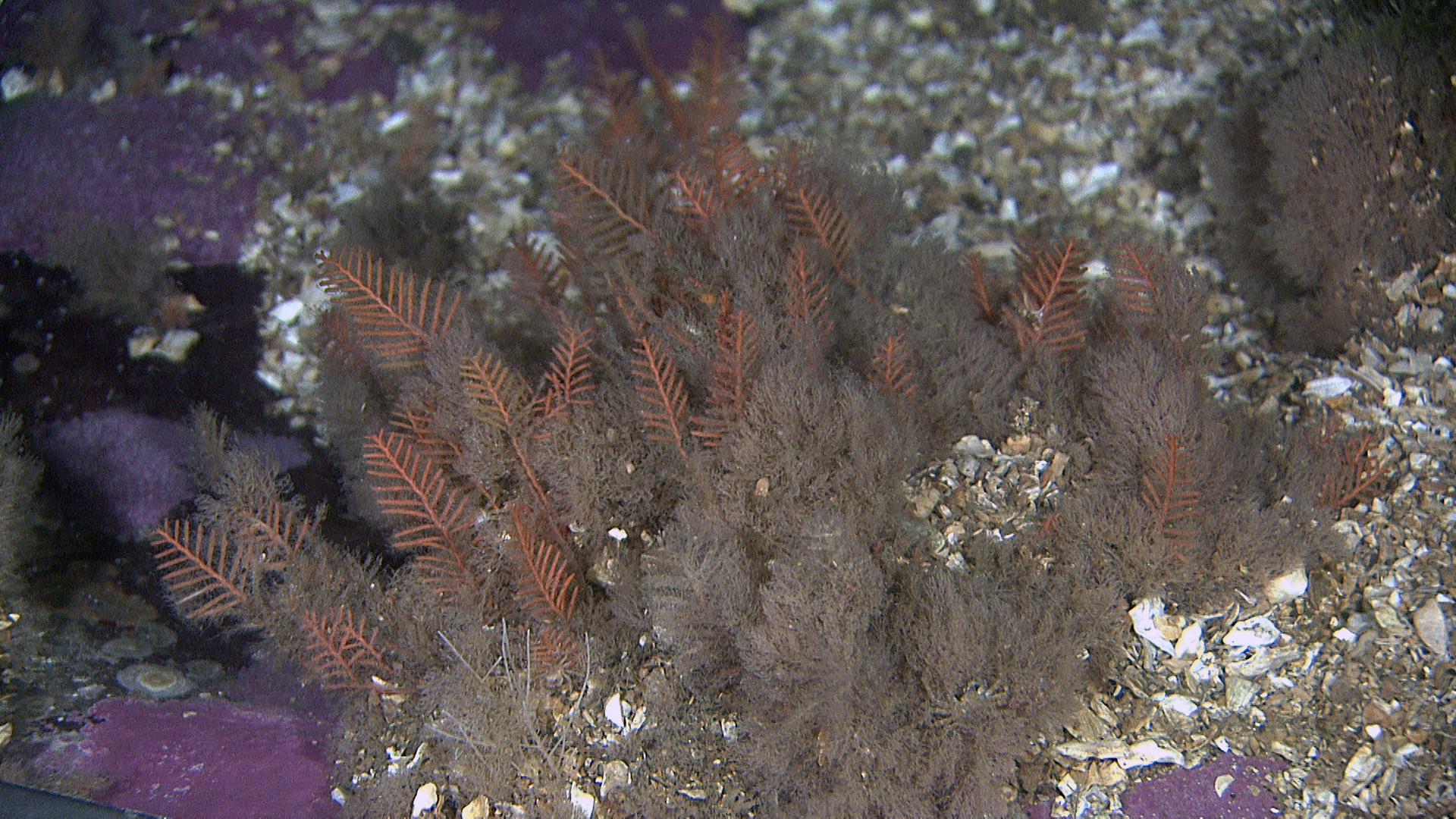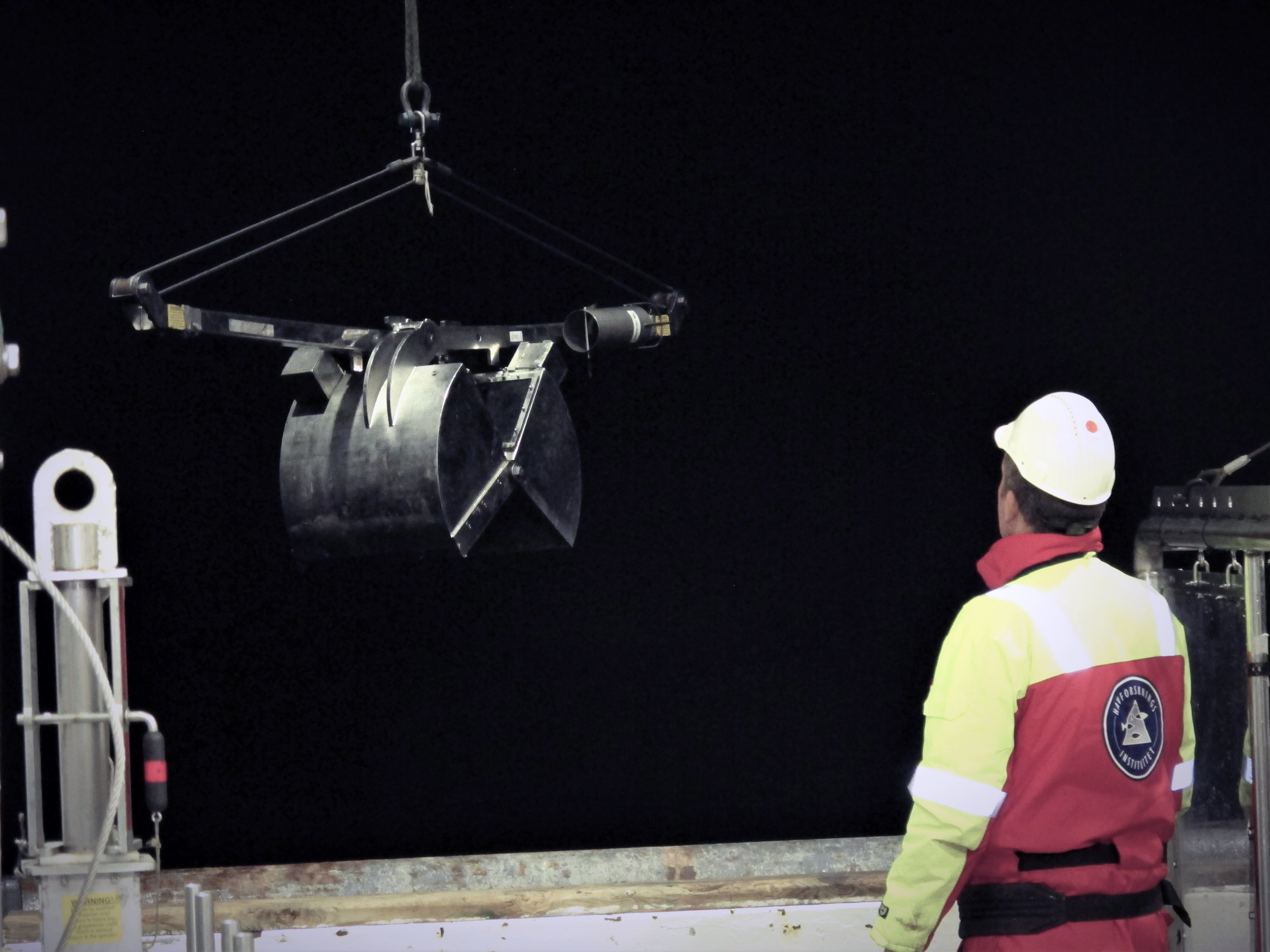Den artsrike fangsten fra en bomtrål, der en rød solstjerne er midtpunktet.
Photo: Børge Holte / HavforskningsinstituttetIn the borderlands of the Polar Front
Published: 04.10.2021 Updated: 12.11.2021
So far, we have performed video surveys of around a hundred sea bottom locations, and at eight locations we have also collected samples of benthic fauna and sediments.

The differences in bottom types that we have observed result in the dominant benthic fauna varying from area to area, and the bottom-water temperature probably also plays a role. Whereas we measured the bottom-water temperature in the eastern part of the Spitsbergen Bank to be -1 °C, it was 3-4 °C further west on the bank. We are in the area known as the Polar Front, where cold Arctic waters from the north come up against the warmer Atlantic water from the west and south.
The shells of dead bivalves, barnacles and snails cover large sections of the eastern areas of the Spitsbergen Bank. Some of the shells may be thousands of years old, and if you dig down 5-6 cm there are shell fragments that are probably up to 10,000 years old. But naturally we also observe the shells of animals that have died recently in the videos taken by the “Chimaera” video rig, which moves at 0.7 knots a few tens of centimetres above the sea floor. The accumulation of shell fragments is not unusual in shallow waters along the Norwegian coast, and they often form piles of shell sand similar to ones we have seen here on the Spitsbergen Bank. A high proportion of the shell fragments come from the “blunt gaper”, a species which we have caught alive in relatively shallow waters with our benthic trawl. The empty shells of Iceland scallops, alongside live scallops, can be seen scattered in varying quantities across large parts of the bank.

On the rocky substrate of the coldest, easternmost part of the bank, we observed large quantities of brittle stars, as well as the sea urchin Strongylocentrotus, which thrives in northerly waters. These are types of echinoderms, and many of them are familiar from cold, Arctic waters. However, the most typically high-Arctic species we observed in the benthic community was the sea lily Heliometra glacialis, which we found densely packed in the cold, eastern part of the Spitsbergen Bank. Although this sea lily bears no resemblance to either a brittle star or a sea urchin, it is also an echinoderm. Previously, the Mareano programme had only found significant amounts of Heliometra during our Arctic surveys in 2018-2019, to Kvitøyrenna east of Svalbard and in one of Europe’s northernmost fjords, Rijpfjorden on Nordaustlandet (Svalbard).

Further west on the Spitsbergen Bank, where there is some intrusion of warmer Atlantic waters, the benthic communities are more similar to the ones we know from rock and gravel substrates along the Norwegian coast. Typical species here included green sea urchins, nudibranchs, barnacles and hermit crabs. The latter, which we often see along the Norwegian coast, live in the shells of sea snails. Here, on the Spitsbergen Bank, it is clear that there is plenty of food for the hermit crabs to find between the rocks and barnacle shells. However, even on the sea floor there can be a shortage of space, and the principle of might is right often applies, leading to scuffles.
The further west towards Bear Island we get, the stronger the bottom currents become, and many benthic animals cannot hold on in the powerful current. However, there are more orange-footed sea cucumbers here, which are equipped with suckers that give them a solid footing on firm rocks.
In the same way as during Mareano surveys in 2017, we can see how the sea cucumbers provide shelter and a substrate for other organisms, creating a “sea cucumber bottom”, which also includes colonies of small cnidarians and moss animals.




